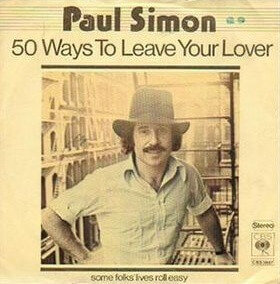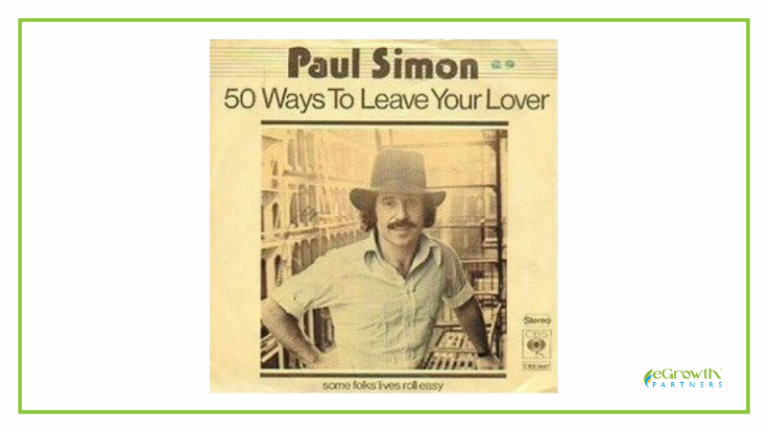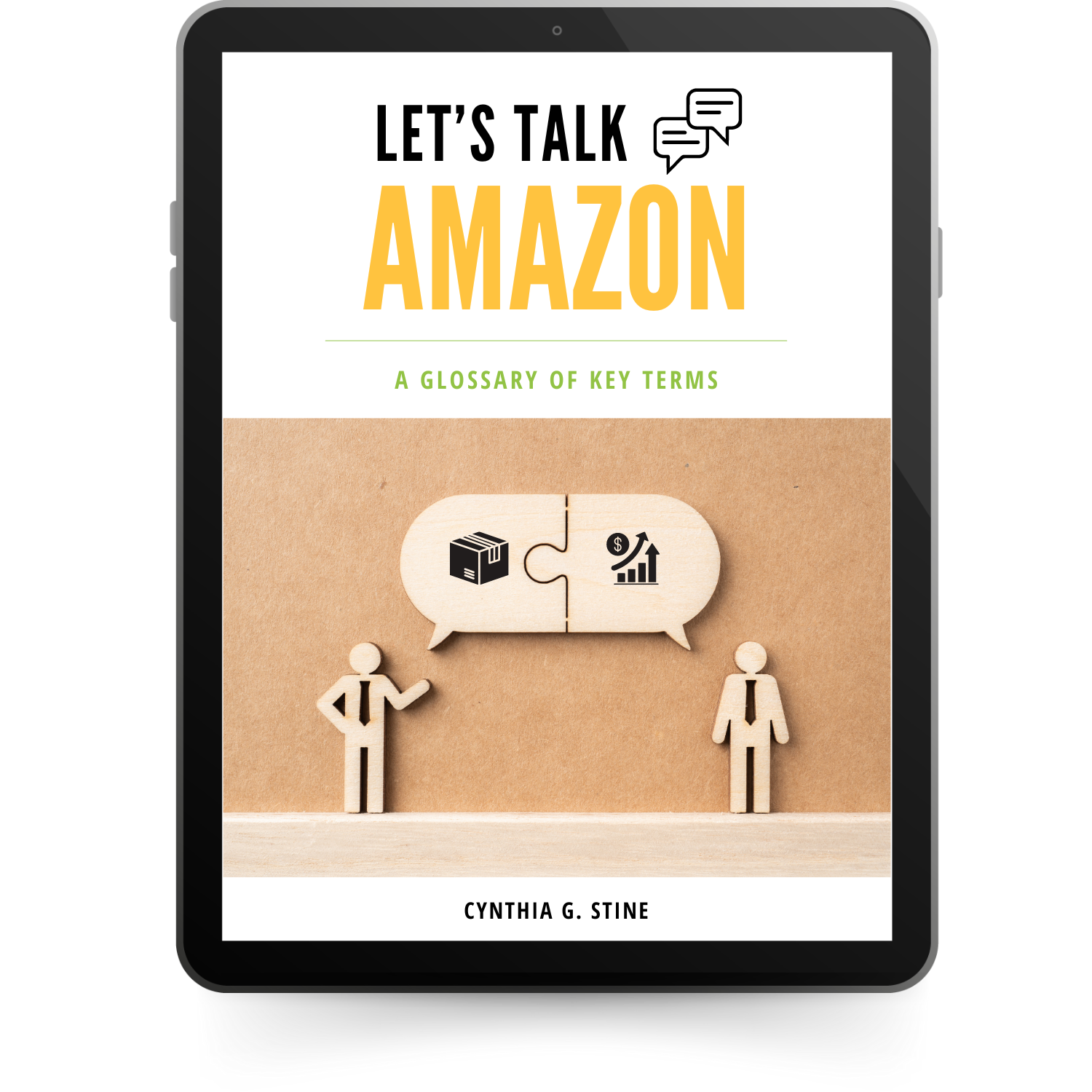
Recently I’ve been working with some private consulting clients to get their accounts reinstated on Amazon. This is extremely nerve-wracking for me and my clients. Once your account has been suspended, you have ONE chance to get it back. In addition, Amazon suspends all your payments for an indefinite amount of time and your inventory is sitting in the warehouse accumulating fees but not sales.
I don’t normally like to write about negative things and my intention in writing this post is not to scare people, but to help other sellers stay out of trouble in the first place. What I’ve learned in working with my clients is that these points are not obvious to everyone.
Don’t worry, I won’t actually be covering 50 ways to get in trouble with Amazon, it just seemed appropriate and less icky than a “50 Shades of Gray” reference. If you don’t know Paul Simon’s song, just remember my goal is to help you in your struggle to be free…
Seller Metrics And Performance
Most sellers get in trouble because they don’t stay on top of their customer metrics. They may have A-to-Z claims, too many negative seller reviews, cancelled orders, a lot of returns for a particular SKU or even something as simple as customer emails that are not answered quickly enough. My Dad got a warning about that early in his seller career. He didn’t realize that his customers were even trying to reach him.
Depending on the severity of the infraction, Amazon will warn you first by email and then suspend you if they don’t hear from you immediately. You are allowed to appeal your suspension but there is no guarantee that they will reinstate you. This is your ONE chance to get back on track.
Performance issues are the easiest to address and fix. My experience is that Amazon is more forgiving of performance issues and will work with you if they are convinced of your sincerity and if you respond quickly.
If you are a merchant seller (vs. FBA), you will likely be dinged for this at some point. It is very hard to meet all of Amazon’s fulfillment requirements as well as they do. Infractions can include not getting your orders out fast enough, your refund policy, your shipping vendor, how you handle customer complaints and much more. If you are not selling FBA, they put your operations under a microscope.
One of my clients had issues because he was using USPS for delivery of a particular line of MF products. Even though customers had tracking links, USPS got backed up around Xmas and orders were taking more than a week to be delivered. He got a lot of negative feedback in a short amount of time for using USPS for shipping.
Guess what? Amazon agreed with the customer. From my client’s perspective, he had to use USPS or else he would lose his margin in the product. It wasn’t his fault that USPS didn’t meet their obligation. I had to explain to him over and over again that Amazon doesn’t care. He needs to charge more if that’s the issue and use a more reliable carrier. By applying refunds and contacting the unhappy customers we were able to get most of the negative feedback removed. Over time I got him to switch to FBA for much of his product line because he could not keep up with Amazon in the fulfillment arena and I felt he could still make a good margin using FBA.
FBA sellers get into trouble by not taking care of negative feedback, not responding to customers quickly enough and generally not paying attention to Amazon warnings and notifications. Using FBA means our other performance metrics are great.

As you can see, FBA sellers have power over our customer feedback, cancellations, policy violations, contact response time and defect rate. Amazon handles everything else. Cancellations are where the seller cancels the order. I’ve had to do that once in my selling career because the customer wanted me to ship an aerosol overseas (it was MF) and I couldn’t.
Over the years I’ve also had some defective products. They weren’t my fault – I buy new from retail stores – but once I realized I had a problem I withdrew the rest of the defective products and had them destroyed.
This is DIFFERENT from when a customer returns a product because it is defective. Many customers give that reason for a return so they can get free shipping back. Amazon knows this. If the product was new going out to the customer, we get the benefit of the doubt. HOWEVER, if they get a bunch of returns for the same SKU, that is a problem and you’ll see it appear on your metrics.
I had an extra case of my own book that I wanted to get out of my house so I was selling them FBA. Wouldn’t you know it? The manufacturer had a printing error! I hadn’t flipped through the books and didn’t catch it. I felt horrible and freaked out. I withdrew the books and contacted everyone who had bought a book from me and sent them a replacement plus I gave them the eBook for free. It was the right thing to do and it kept me from getting dinged for a defective product. I was so grateful to the customer who brought it to my attention. Then I went and got reimbursed by the publishing company.
You will notice in the image that I have some Notifications. These were also sent to me on email and are being addressed. With Amazon’s new policy requiring a high and low price point, I have several of these. They are not infractions or reasons for my account to be suspended. Amazon merely suspends the listing until the issue is fixed. If they were serious, they’d be yellow or red.
You’ll notice that everything has a green check mark. If you are in trouble, you’ll see either a yellow triangle (fair) or a red X (poor) in place of these green check marks. If you see that in policy violations or anywhere else, take heed!Address it now before you get suspended.
Policy Violation

This is much tougher. If you have violated an Amazon Policy you may never get your account back. Performance can be improved; rule breakers are bad in Amazon’s world. The most common policy violation is when your product doesn’t match the listing.
Last year I was attacked by some sellers who were changing my ASINs in significant and improper ways (a black hippo became a white dog, for example). I was really upset not only because this is evil behavior, but also because if a customer had complained to Amazon that my product didn’t match the listing, I could lose my right to sell on Amazon. It seems small, but this is a very serious violation in Amazon’s eyes. Knowing what could happen to me, I was proactive. I filed a detailed and specific policy violation against these sellers for deliberately changing the listings to certain ASINs. I spent hours researching the situation and making my case before I sent it. My problems went away immediately. I don’t know who these evil sellers were, but Amazon does. They know every change that is made to their catalog and by whom. I asked them to help me and look into it.
I don’t know what happened to those sellers but I’m confident that they were at least warned which is important because you only get so many warnings from Amazon before you are out. I don’t know exactly how many warnings you get, but my experience with my customers seems to show that it can be as few as two warnings and you are out for policy violations – especially if they are repeats (for the same reason). Amazon won’t tell you, of course.
Warnings are different from notifications. A notification requires action and may result in a suspended listing or something like that, but it is not a rule infraction or policy violation. If you never fix the problem it will only hurt you – not them. A warning means do it now or you’ll be sorry.
Another client of mine lost his selling rights because a competing seller repeatedly reported him for selling a different product than was on the listing. Basically, my client was selling on this other guy’s listing and he didn’t like it. It was actually the same product, but the other seller claimed otherwise. I’m trying really hard to get Amazon to reconsider their decision (he’s not just suspended, he’s out), but it may be too late. In his case, we knew who the other seller was and tracked him down. He is willing to drop the case with Amazon. My fingers are crossed.
Another policy violation is to sell a restricted or protected brand without permission. You will be warned first, then they’ll suspend the listing and then they’ll suspend you. One of my clients tried to argue with Amazon and got suspended. When I was hired, I told him to get a letter from the manufacturer giving him permission to sell. We submitted that letter with an appeal and his listing was reinstated.
Another seller simply missed the emails from Amazon. He didn’t realize he was selling restricted products. Because his sales were so high, he quickly got into trouble with multiple offenses before he realized what was going on. His account was suspended. He was able to get it back and now is much more careful about the products he buys to make sure they are allowed.
Appeal

Your last chance once your account has been suspended is the appeal. You file it through the “Performance Notifications” page on SellerCentral (Under “Performance”). What I’ve learned from working with my customers is that most people are terrible letter writers. This sounds self-serving since I write these letters for money, but it is like night and day to compare their letters to mine.
Sellers whose accounts have been suspended, are frustrated, defensive and anxious. Their letters tend to reflect that. In this state most are incapable of putting on their Amazon hats and writing what Amazon wants to hear. If you find yourself in this situation and you feel confident in your abilities to write the appeal, I suggest you still have a friendly seller pal review it after you write it and listen to their feedback. That’s what I would do and I write for a living. Here’s what Amazon needs to hear:
- You are totally committed to the customer experience and will do everything to fix this issue so the customer will have an excellent experience with you. You want to be a good partner to Amazon.
- You recognize the customer belongs to Amazon.
- You were confused or didn’t understand what was expected of you. You are sorry.
- You have a plan to fix the problem. Said plan needs to be clear (short bullets are good) and somehow measurable or track-able by Amazon. Promising to do better is not enough.
- Things you have already done to address the issue. Be proactive.
- A request for Amazon’s help/clarification/whatever. This is important because it helps establish your sincerity, humbleness and willingness to change.
Please note what is NOT in this letter:
- Explanation of what happened or how you are actually right in this case or got bad advice from Amazon seller support, or it was the carrier’s fault, etc.
- Finger-pointing at other sellers who are getting away with what you are being accused of
- Finger-pointing at competitors who are filing policy violations against you to be evil (I’ve used the phrase “misunderstanding between sellers that did not affect the customer buying experience” instead)
- Anything that hints that Amazon is WRONG in suspending you. You MUST start from the position that they are RIGHT and you made a mistake – one that you are more than willing to rectify.
Does all this seem obvious? I assure you that it is not. Getting suspended is scary, emotional and potentially very expensive for you. This must be a very carefully crafted letter.
My clients are often desperate to explain to me how they did nothing wrong and I let them to a certain extent (I do need to know the story to write a truthful letter), but then I cut them off and tell them: “Unfortunately, Amazon doesn’t care and we can’t make them care. All we can do is tell them what they want to hear and show them your willingness to work with them to fix the problem.”
Every word in your letter has to be aimed at improving the customer experience. Be polite. Be truthful. Do what you say you will.
When the letter is finalized, have it proofed by someone else so that it is as perfect as possible when it goes to Amazon. You want them to know you are detail oriented. A letter with typos and mistakes….not cool.
It has to be MORE than the letter, of course. You actually have to change your behavior. For some of my clients this is a problem. They want to be reinstated, but they are not willing to change. That means they will be banned eventually. Once you are reinstated, you are on probation and they are watching you closely. They do things to ensure compliance like limit your distributions (ouch) for months and throttle back on orders they send you (really! It seems counterproductive, but they want to make sure you can handle the orders that are sent to you if you are MF).
Even if you remove all your negative feedback and have improved performance metrics, they will not actually show up on your account right away. Whatever algorithm they use is for performance over time which means you have to be good for months before your account goes back up to green again. This has serious repercussions on your ability to sell. It can impact your ability to get the Buy Box (no matter how low your price) for a while.
A Good Offense
While sellers who have been banned from Amazon will sometimes position their situation as coming out of the blue or being a complete surprise, the fact is these sellers did receive notice. In the first case, they signed a contract with Amazon stating that they would follow Amazon’s rules. Shame on them for not reading it. In the case of my clients and others I know of, they also had email and SellerCentral warnings from Amazon. What was really going on was that they were not paying attention.
They didn’t understand Amazon’s policies and performance metrics and weren’t working to meet them. They weren’t thinking like Amazon and their business practices reflected that. Sometimes they didn’t take the notices seriously or respond quickly enough. Some erroneously thought they were making too much money for Amazon to cut them off. In short, they were not paying attention and didn’t realize the consequences until it was too late.

YOU are not in this situation. You are forewarned and forearmed. You know that the best defense is a good offense. Look at the checklist below and it should help you stay out of trouble with Amazon:
- ALWAYS read notifications from Amazon relating to your account metrics – you may want to make a special folder in your email in-box just for Amazon notifications
- Address negative feedback immediately and try to get it removed. I use a software program that sends me texts the instant I get negative feedback so I can respond within a few minutes to the complaint – it goes a long way towards getting that feedback removed.
- If your customer wants a refund, give them a refund. You can do it for them immediately through SellerCentral. Don’t argue, don’t talk them out of it. (you wouldn’t believe some of the things I’ve seen as a consultant)
- Check your customer emails every time you log in to SellerCentral (it is on your dashboard plus Amazon will send a copy to your email address) and respond in less than 24 hours
- Don’t fudge on your listings. If your product is not an exact match for the listing, create a new listing rather than listing your product improperly
- Review all ASIN changes and dispute any that are incorrect (the dispute process is in the bottom of the email they send you)
- WWAD? Ask yourself this question whenever an issue comes up where you are not clear. Look at the world through Amazon’s customer-centric lenses – not seller-centric lenses.
- Read Amazon’s Selling Policies. You can find them in SellerCentral Help. There are policies for selling in general and then there are some that are FBA specific. Check out the list of Prohibited Seller Activities, too. Those are the ones that will get you in trouble the quickest.
- Head problems off at the pass. I use a program that sends letters to my customers the day they get their product and then a few days later. In each letter I tell them that I will help them if they are not 100% happy with their purchase. My letter tells them how to get a refund and return their product. I ask them for a 5-star review. It also allows them to contact me if they are unhappy about their experience beyond wanting a refund. This way I can deal with big problems before they call Amazon and complain.
- Be polite and sympathetic with customers at all times – no matter what. I’ve had customers say some pretty terrible things to me how I’m a liar (the product wasn’t what they expected), incompetent and worse. I’ve gotten dinged for things that Amazon customer service told them that had nothing to do with me. I’m always sympathetic. “I can feel how frustrated you are by your letter,” “I hate it when I think I’m ordering one thing and I get another,” “I’m so sorry this happened to you.” I own the issue even if it isn’t my fault. Then I THANK THEM for giving me the opportunity to fix this issue for them. Yep. I’m grateful. I can’t fix what I don’t know about. Then I offer a solution. Once I’ve fixed the situation, I’ll ask them to remove negative feedback.
If I had to sum this entire blog post into three words, they would be: Think Like Amazon. It will keep you out of trouble.
It would take a whole book to go through the myriad ways that Sellers have lost their selling privileges, but the bottom line is this: Amazon wants an excellent experience for its customers. It wants good seller partners to help deliver this experience. They are not out to get you and they don’t want you to fail. They want you to succeed. Be mindful of the possible pitfalls, but don’t waste time being afraid. You have a plan.
Mistakes happen. Honest sellers can get into trouble without realizing it. Customers lie occasionally and other sellers can be real bastards sometimes. In most cases, Amazon will give you a second chance if you handle the situation properly. Understand their policies and do your best. There is a good chance you will never have a problem with Amazon.
If you’ve just gotten a suspension notice and would like me to help you by phone, sign up for an assessment.

I’m heading down to Florida at the end of this month. In addition to my two sourcing classes, I’m available for in-person private consults in Florida either before or after the class. With previous clients, they’ve brought their laptops and we’ve looked at their inventory, walked through certain aspects of SellerCentral and more. Private consults can cover any Amazon selling topic.16




